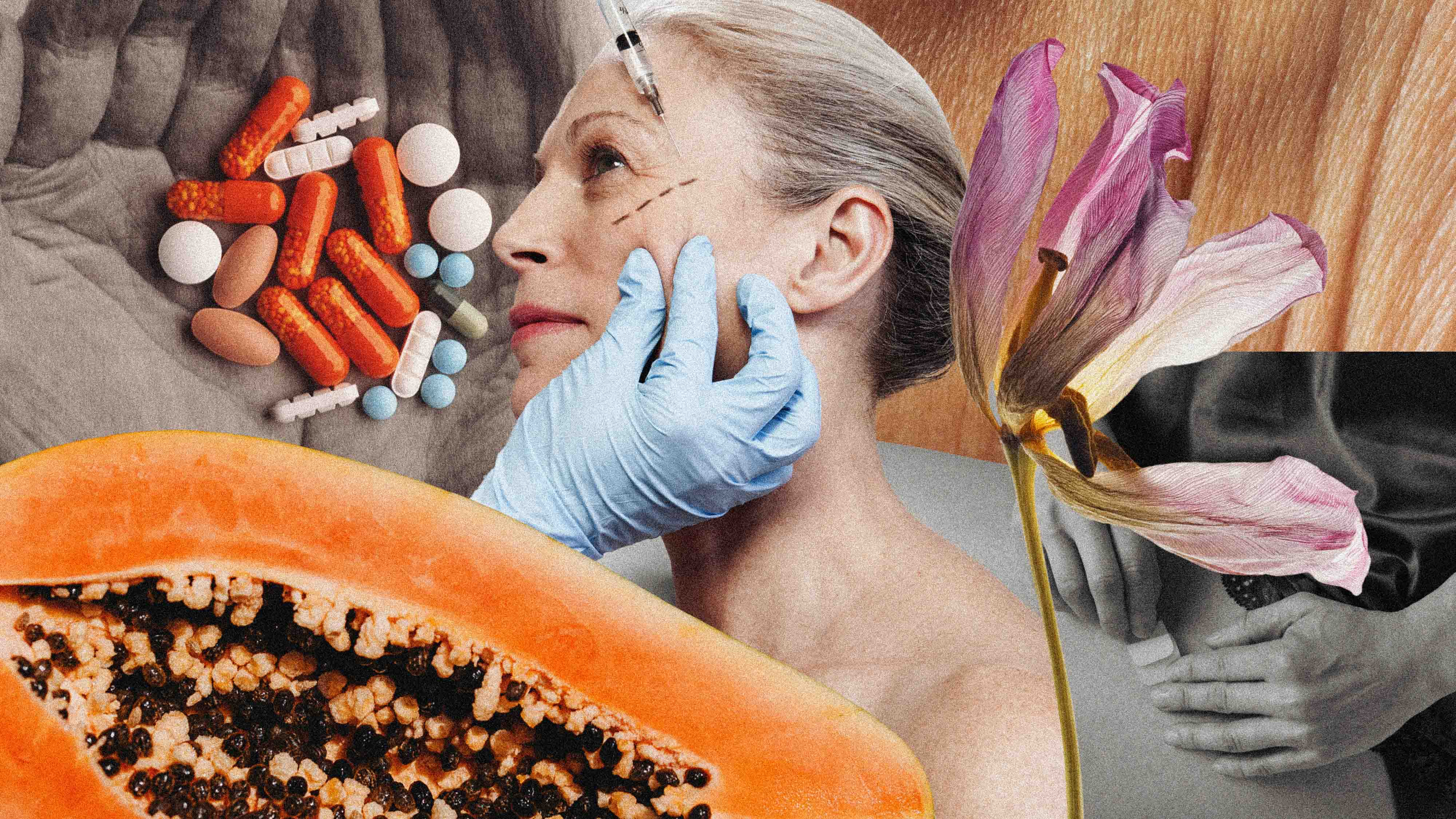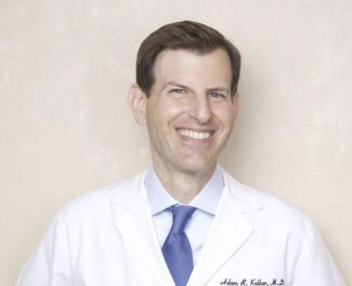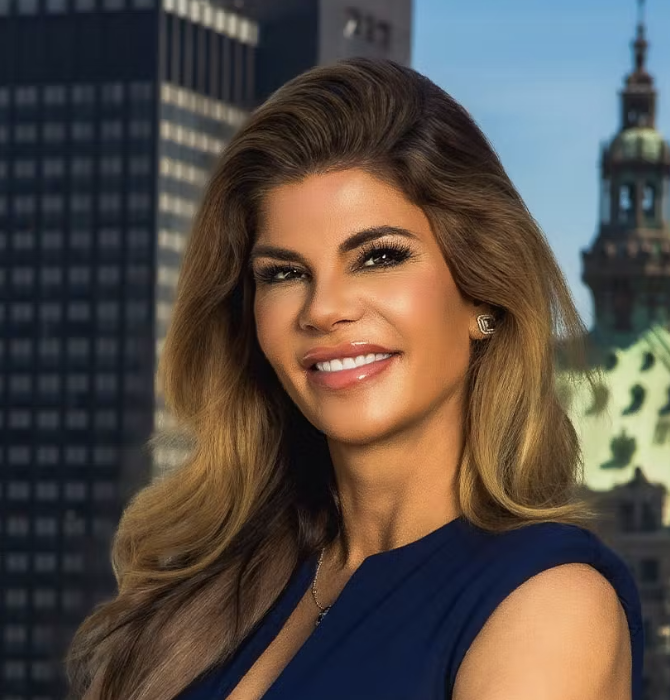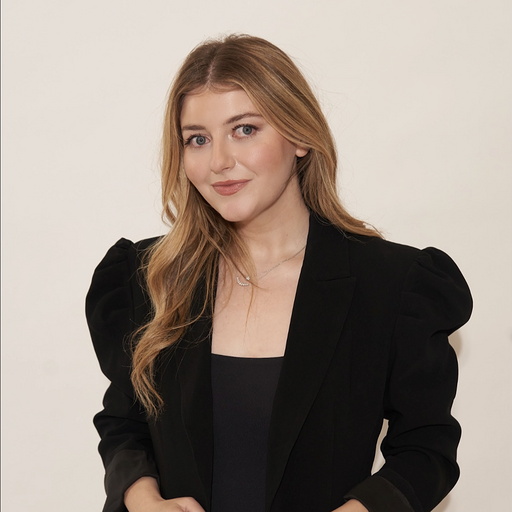Step Aside, "Mommy Makeovers"—It's Time for "Menopause Makeovers" to Take the Reins
What if you didn't have to feel your biological age?


On paper, Lori Smith has passed her biological prime. She’s no longer in her peak physical, sexual, or cognitive age bracket, all of which scientists have identified as falling somewhere between the 20s and 30s. She’s in her 40s—48, to be exact. Her hot flashes are in high gear, her sex drive is on a downward trajectory, and when she looks in the mirror, she thinks, time for Botox. But Smith says she’s cracked the code to feeling “a hundred times better.”
She is part of a growing cohort of women taking "menopause makeovers"—a term coined to describe refinement and rejuvenation of the mind, body, and overall health—mainstream. With a well-trained team of endocrinologists, gynecologists, plastic surgeons, and dermatologists, growing older doesn't have to mean feeling old.
“There’s this outdated idea that aging means becoming less vibrant. More than ever, people in their 50s, 60s, and beyond are prioritizing wellness, investing in self-care, and seeing aging as a time of reinvention rather than decline,” says board-certified plastic surgeon and co-founder of Inside Beauty Spa Sheila Malek Kassir, MD. “But it’s not just about aesthetics; it’s about aligning how you look with how you feel: strong, confident, and full of life.”
Flipping the script on what it means to be in menopause has been a long time coming. Turning 50 no longer means it’s time for a Golden Girls-style haircut or to start a Tupperware Club, especially since markers for Big Life Events are increasingly pushed back. More than 100,000 Americans now give birth in their 40s. One in 10 workers in the U.S. are over 55 and the average retirement age is 65. Life doesn't stop after 30—in fact, it tends to only get busier with age. In 2025, hitting menopause, which typically occurs between 45 and 58, [Black and Asian women are shown to experience the onset of symptoms earlier than White women], signals the need for a new toolkit to stay active, feel hot, and look refreshed.
It’s about aligning how you look with how you feel: strong, confident, and full of life.
Dr. Sheila Malek Kassir
What's Involved in a Menopause Makeover?
Pushing back against our natural biological clock wouldn’t be possible without aesthetic advancements since, like it or not, there are distinct physiological changes that happen during this period in a woman's life. “From a clinical perspective, estrogen decline leads to approximately 30 percent collagen loss within the first five years of menopause, resulting in increased skin laxity, volume depletion, and textural changes,” explains board-certified dermatologist Pooja Rahmbia, MD. The dip in estrogen, which is said to drop 90 percent throughout menopause and level out in post-menopause, can also leads to “fat loss, particularly in the mid and upper face, and fat gain in the torso, breasts, and other areas of the body,” says board-certified plastic surgeon Adam Kolker, MD.
For the women spearheading the menopause makeover movement, addressing these changes to their appearance isn’t about jumping in a time machine. It’s about feeling and looking like they’re capable of doing everything they already are, like running a Fortune 500 company or being an active mother or grandmother. “They’re not trying to look 20; they just want to look as energized and youthful as they feel,” says Dr. Kassir.
Achieving the most comprehensive outcome often requires a multi-step, multi-targeted approach that combines skincare, aesthetics, and plastic surgery. In addition to topical care—retinoids, peptides, and a great foundation for mature skin—many women are opting for injectables, innovative lasers, and more invasive skin rejuvenating procedures allow many menopause makeover patients to maximize results and minimize downtime. This new era of procedures takes a more comprehensive approach to rejuvenation, prioritizing the condition and health of the skin as a whole—a stark contrast from the one-and-done facelifts of the past. Here, top dermatologists and plastic surgeons share what they're doing (and seeing) the most in their practices.
Get exclusive access to fashion and beauty trends, hot-off-the-press celebrity news, and more.
Injectables and Lasers
It doesn't matter how much retinol you use or the number of lifting serums in your routine; the body's natural production of collagen (the skin's youth factor), elastin (the bounce back factor), and hyaluronic acid (hydration) decreases with age. "This means that there is less protein support, resulting in more noticeable sagging, folds and fine lines, especially in areas where skin is thinner (eyes, neck, décolleté) and where there was frequent movement (neck, peri-oral region, peri-orbital region, and jawline)," explains board-certified dermatologist Dendy Engelman, M.D.. "Women at this stage of life also tend to experience very dry skin as a result of reduced moisture retention."
- Injectables
Dr. Engelman has found success pairing the just-FDA approved Nefertiti Lift—a Botox technique that smooths the neck and defines the jawline—with SkinVive, a first-of-its-kind hyaluronic acid injection for skin smoothness and hydration that hit the US market in late 2023. “We inject Botox into the platysma muscles (a thin muscle that lies along the neck) to smooth and accentuate the neck and jaw, which tend to sag and show signs of crepiness as we age,” Engelman shares. The SkinVive, on the other hand, offers a six-month solution to the skin dryness and rough texture that coincides with menopause.
- Skin Tightening Devices
Board-certified dermatologist Pooja Rambhia, M.D., is a big proponent of combining ultrasound therapy, like Ulthera, with biostimulatory filler to both tighten and plump the skin in an effort to compensate for increased laxity and dwindling volume. “Studies have shown that they have synergistic effects when combined,” she says, leaving patients with more collagen production and skin-tightening results than when either treatment is used individually.
Cosmetic Surgery
Non-invasive treatments are only part of the puzzle when it comes to lifting, firming, and rejuvenating your overall appearance during menopause. Sometimes, a heavier-duty procedure or surgery is necessary to get the desired result. Plastic surgeons' offices are busier than ever, with the American Society of Plastic Surgeons reporting that 30 percent of practitioners have seen their businesses more than double since 2021. Of that percentage, women aged 40 to 69 comprise 63 percent of liposuction patients, 52 percent of breast reduction patients, and 81 percent of blepherophasty (upper eye lift) patients.
- Blepheroplasty
Dr. Kolker says a bleph can make the biggest difference in peri-menopausal or menopausal patients. “Due to volume loss and loss of elasticity, the skin of upper and lower eyelids may appear excessive,” he explains. A bleph, in which the surgeon cuts into the crease of the eyelid to remove excess skin, can open the eyes and create a more youthful, wide-eyed appearance.
- Fat Restoration
“Fat restoration, particularly in the tear trough area, also helps smooth the transition between eyelid and cheek, especially when done with complementing eyelid surgery.” Fat grafting is also commonly done in the cheek area. Depending on the patient, this can also coincide with a mini-facelift, which is more frequently being done on younger and younger patients.
A post shared by Plastic Surgeon Dr. Kassir (@drkassir)
A photo posted by on
Hormonal Therapy
Perhaps the most crucial component to the menopause makeover, however, is imperceptible to the naked eye—addressing how the body functions. Enter: hormone therapy, a treatment that seeks to balance shifting hormone levels following the steep decline that coincides with menopause by supplementing levels of estrogen and/or testosterone and progesterone via patches, tablets, gels, or pellets. (Hormone therapy should not be done without warning. Not everyone is a candidate; it is understudied, training among physicians is not standardized, and, according to some doctors, it can lead to increased risk of heart disease, blood clot, stroke, or cancer.)
That being said, board-certified OB/GYN and founder of HerMD Somi Javaid, MD, along with dozens of leading practitioners in the field, note that the benefits of hormone therapy, which is most commonly administered systemically or locally, are transformative. “Because women have estrogen receptors from head to toe, we are learning that symptoms are hot flashes, brain fog, frozen shoulder, weight gain, joint pain, low libido, insomnia—almost all of them can be mitigated with hormone therapy,” explains Dr. Javaid. “The beautiful thing is that it treats the visible and invisible symptoms. Hormone therapy can help with muscle mass and energy…it can help with bone density and cognition, too.”
That’s the goal of a menopause makeover. Not to nip-tuck women into looking a decade younger, but to give them the tools (and a few tweakments) to feel like the sexiest, healthiest, most empowered version of themselves, no matter their age. “It’s made everything easier; I felt vibrant and alive again,” Smith says, who has been doing a mix of hormone therapy, Botox, and lasers for the past two years. She’s living proof that women in their 50s (and 60s and 70s and 80s) are still very much in their prime.
Meet the Experts

Dr. Kolker is passionate about attaining the most exquisite, natural, and beautiful results for every individual, balancing artistry, meticulous attention to detail, extraordinary care, and safety. Always a doctor first with the very best interests of his patients in mind, Dr. Kolker was raised in a family of physicians and surgeons, and was inspired to pursue a career in surgery at an early age. At age 17, Dr. Adam Kolker was accepted to medical school, and graduated from the highly selective accelerated six-year combined biomedical program at Union College and Albany Medical College with honors at age 23. In addition to a Doctor of Medicine degree, he Dr. Kolker satisfied concentrations in Biology and Fine Arts.

Pooja H. Rambhia, MD, is a board-certified dermatologist with specialized fellowship training in cosmetic dermatology and laser surgery. She provides comprehensive cosmetic and medical dermatologic care, specializing in laser treatments, injectables, and facial and body contouring. Dr. Rambhia is dedicated to delivering personalized, natural-looking results while offering safe and effective treatments for all skin types, including skin of color.
A Long Island, NY native, Dr. Rambhia received her Bachelor of Arts in biochemistry and Doctorate of Medicine from Case Western Reserve University through their prestigious BA/MD pre-professional scholars program. During medical school, she completed an additional pre-doctoral fellowship through the National Institutes of Health (NIH) T32 training grant in investigative and molecular dermatology. Her dedication to research was recognized with the American Skin Association medical student grant award for her work on genetic melanoma syndromes.
Dr. Rambhia subsequently completed her internship at The Mount Sinai Hospital and her dermatology residency at Zucker School of Medicine/Northwell Health, where she was selected as Chief Resident in her final year. Upon graduation, she was honored with the Northwell Dermatology Departmental Award for Humanism in Medicine, recognizing her compassionate patient care and commitment to leadership. Following residency, Dr. Rambhia completed the prestigious American Society for Dermatologic Surgery (ASDS) Cosmetic and Dermatologic Surgery Fellowship at UnionDerm under the mentorship of Dr. Anne Chapas. During this year-long fellowship, she served as a sub-investigator on several clinical trials exploring treatments for hyperhidrosis, acne, acne scars, melasma, wrinkles, skin laxity, and facial volume loss using novel laser and energy-based device technologies.

Dr. Dendy Engelman is a board-certified dermatologist known for her expertise in cosmetic and surgical dermatology, specializing in advanced skin treatments and patient care.

Dr. Somi Javaid is a board certified OBGYN and founder of HerMD, a healthcare platform dedicated to closing the gender gap in women’s health by providing specialized care in menopause, sexual health, and gynecology.
As one of fewer than 0.4% of women of color in the U.S. to successfully secure venture capital funding, she is reshaping the future of women’s healthcare while breaking barriers in FemTech and investment, earning recognition like Inc.’s Female Founders 250 list.

Samantha Holender is the Senior Beauty Editor at Marie Claire, where she reports on the best new launches, dives into the science behind skincare, and shares the breakdown on the latest and greatest trends in the beauty space. She's studied up on every ingredient you'll find on INCI list and is constantly in search of the world's glowiest makeup products. She's constantly tracking the biggest nail and hair trends to pop up in the beauty space, going backstage during fashion weeks, tracking celebrity looks, and constantly talking to celebrity hair stylists, nail artists, and makeup artists. Prior to joining the team, she worked as Us Weekly’s Beauty and Style Editor, where she stayed on the pulse of pop culture and broke down celebrity beauty routines, hair transformations, and red carpet looks. Her words have also appeared on Popsugar, Makeup.com, Skincare.com, Delish.com, and Philadelphia Wedding. Samantha also serves as a board member for the American Society of Magazine Editors (ASME). She first joined the organization in 2018, when she worked as an editorial intern at Food Network Magazine and Pioneer Woman Magazine. Samantha has a degree in Journalism and Mass Communications from The George Washington University’s School of Media and Public Affairs. While at GWU, she was a founding member of the school’s HerCampus chapter and served as its President for four years. When she’s not deep in the beauty closet or swatching eyeshadows, you can find her obsessing over Real Housewives and all things Bravo. Keep up with her on Instagram @samholender.